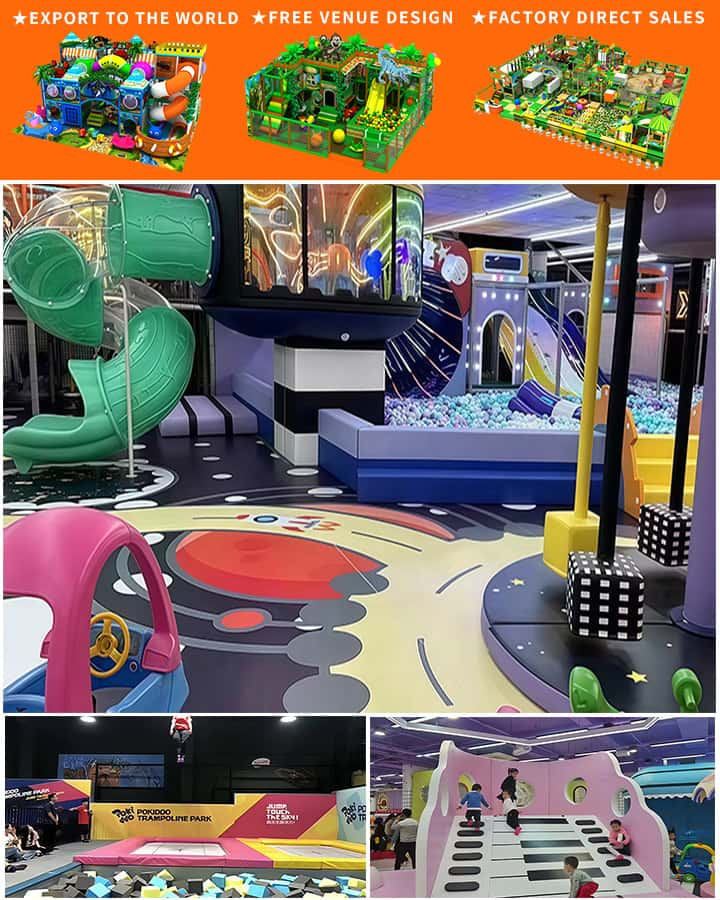In today’s fast-paced world, finding an engaging and safe space for children to play can be a challenging task. This is where the concept of a new kids indoor playground comes into play, offering a controlled environment that combines fun, physical activity, and cognitive development. Whether you are a parent looking to create a mini amusement park at home or a business owner aiming to build a state-of-the-art indoor facility, this guide will help you navigate through the essential aspects of designing and operating a kids indoor playground.
Why Indoor Playgrounds?
Indoor playgrounds offer numerous advantages over outdoor ones. They provide a climate-controlled environment, ensuring comfort irrespective of weather conditions. Additionally, indoor playgrounds can be tailored to include various age-appropriate activities, fostering social interaction, motor skills, and creativity in children. These facilities also tend to have higher safety standards compared to outdoor parks, giving parents peace of mind.
Planning Your Indoor Playground
Define Your Vision and Budget Before diving into the planning process, it’s crucial to define your vision and set a realistic budget. Are you aiming for a small-scale setup at home or a commercial-grade facility? Determine what features are most important to you—be it slides, climbing structures, ball pits, or interactive games.
Choose the Right Location
 For a home-based indoor playground, consider transforming underutilized spaces like basements, garages, or attics. Ensure the area has adequate ceiling height and floor space to accommodate the desired equipment. For commercial ventures, look for accessible locations with high footfall, preferably near residential areas or family-oriented venues.
For a home-based indoor playground, consider transforming underutilized spaces like basements, garages, or attics. Ensure the area has adequate ceiling height and floor space to accommodate the desired equipment. For commercial ventures, look for accessible locations with high footfall, preferably near residential areas or family-oriented venues.Safety First Safety is paramount when designing an indoor playground. Choose equipment made from non-toxic, durable materials and ensure proper installation to prevent accidents. Incorporate soft flooring to cushion falls and use rounded edges to minimize injury risks. Install security mirrors to monitor all areas and maintain a first-aid kit on hand.
Variety of Activities A successful indoor playground caters to various age groups and interests. Include a mix of physical challenges like obstacle courses and climbing walls, creative corners with art supplies, and sensory play areas with textured mats and light-up toys. Interactive technology stations, such as virtual reality experiences, can add a modern touch and keep older kids engaged.
Engaging Theme Create an immersive experience by choosing a central theme for your playground. From jungle adventures and pirate ships to space exploration and fairy tales, a well-executed theme can spark imagination and make the experience more memorable for children.
Operational Tips for Success
Staff Training If operating a commercial playground, ensure all staff members undergo comprehensive training in child supervision, first aid, and customer service. A friendly and attentive team enhances the overall experience for both parents and children.
Cleanliness and Maintenance Regular cleaning schedules are vital to maintaining hygiene standards. Deep clean equipment daily, especially after heavy use, and conduct routine maintenance checks to identify any wear and tear promptly.
Promotional Strategies Attract visitors through effective marketing strategies. Leverage social media platforms to showcase your playground’s unique features, host birthday parties, and collaborate with local schools or daycare centers for field trips. Offering loyalty programs or discounts during off-peak hours can also boost attendance.
Feedback Loop Encourage feedback from visitors to continuously improve your services. Conduct surveys or provide suggestion boxes to understand what works well and where there’s room for improvement.
Conclusion
Creating a new kids indoor playground requires thoughtful planning, creativity, and a commitment to safety and fun. By following these guidelines, you can design an engaging space that not only entertains but also promotes physical, mental, and social development among children. Whether it’s a cozy corner in your living room or a bustling recreational center, an indoor playground is an investment in happiness and growth for our little ones.




